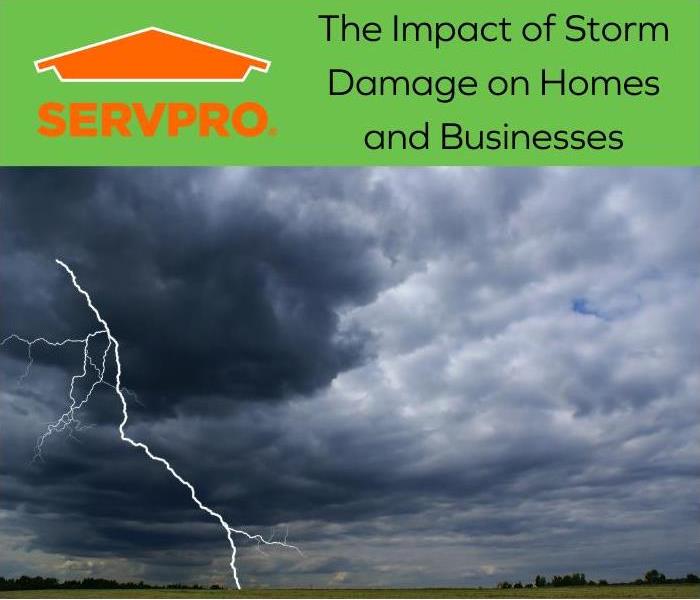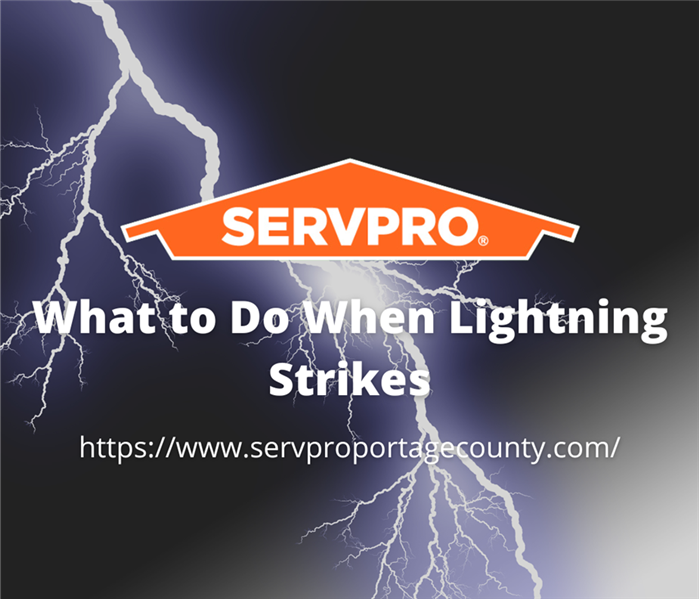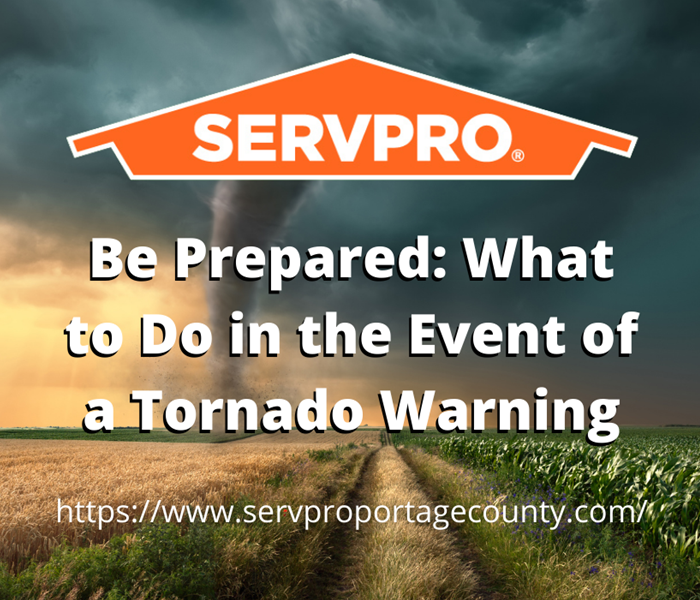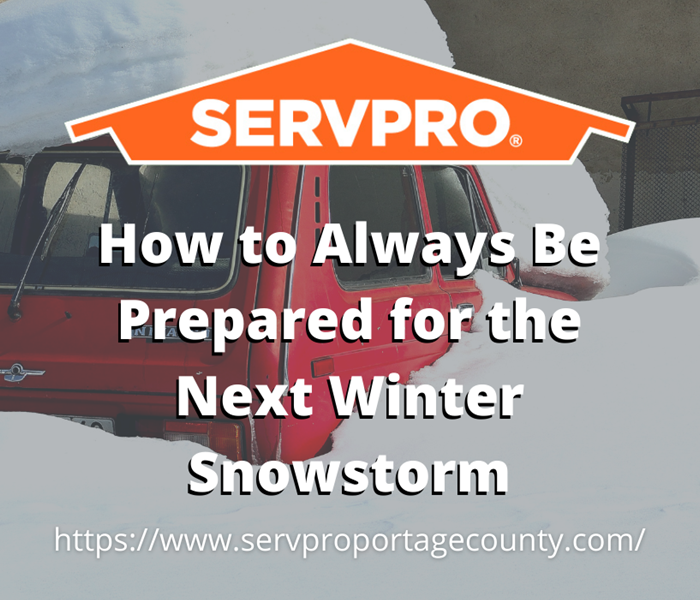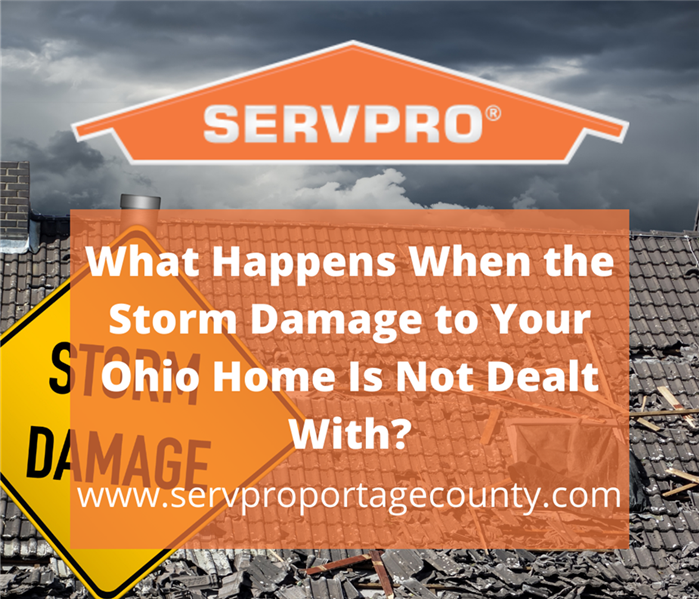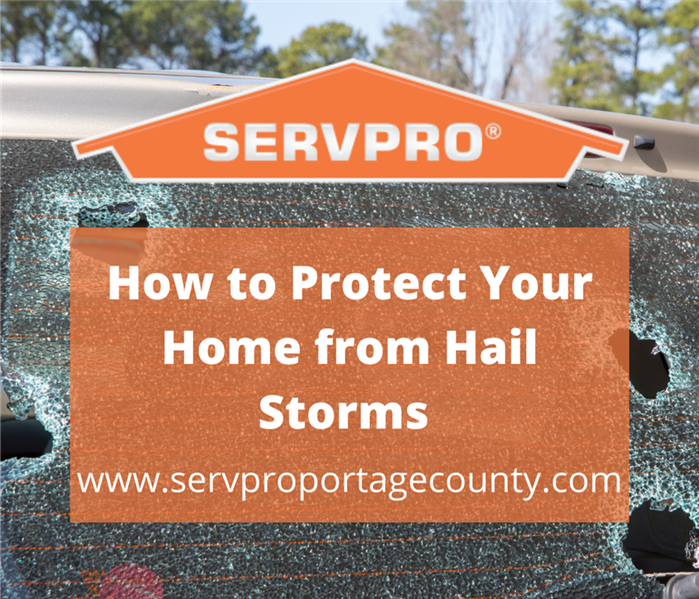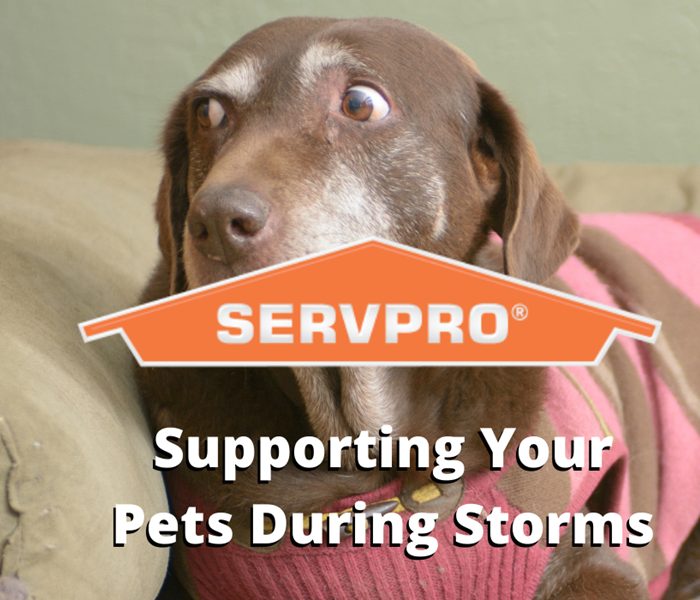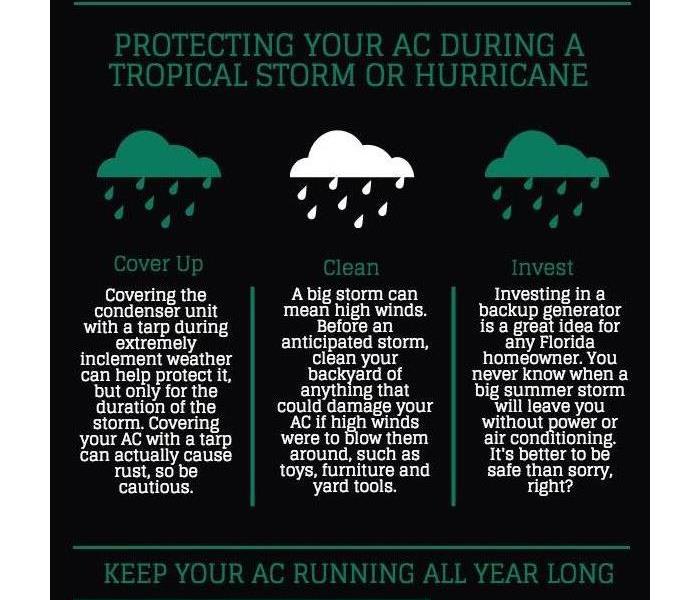Recent Storm Damage Posts
Common Types of Storm Damage and How to Address Them
8/20/2024 (Permalink)
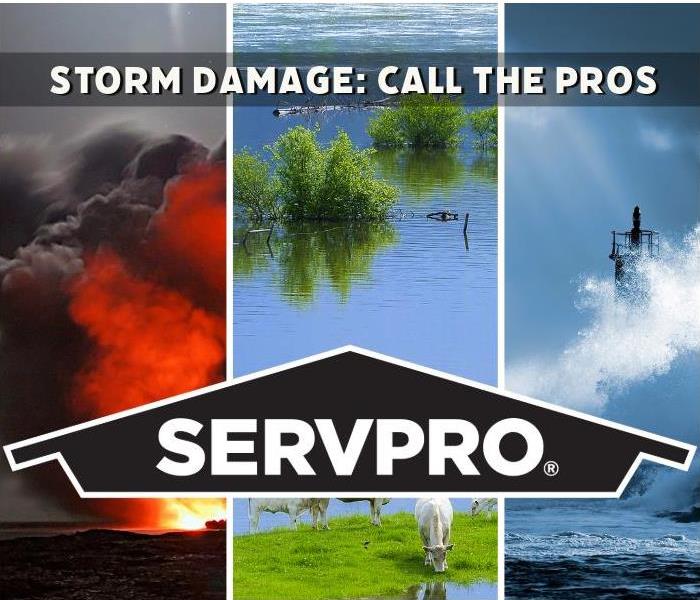 Understanding the common types of storm damage and how to address them is crucial for protecting your property and ensuring a swift recovery.
Understanding the common types of storm damage and how to address them is crucial for protecting your property and ensuring a swift recovery.
Storms can be unpredictable and devastating, leaving behind a trail of destruction that can affect homes, businesses, and entire communities. Understanding the common types of storm damage and how to address them is crucial for protecting your property and ensuring a swift recovery. At SERVPRO Team Johnson, we specialize in storm damage restoration and are here to help you navigate the challenges that come with these natural disasters.
1. Wind Damage
Wind is one of the most common causes of storm damage. Strong winds can easily damage roofs, windows, doors, and even the structural integrity of a building. Wind damage often results in missing shingles, broken windows, and fallen trees, which can cause secondary damage if not promptly addressed.
How to Address Wind Damage:
- Inspect Your Property: After a storm, it's essential to inspect your property for signs of wind damage. Look for missing shingles, damaged gutters, broken windows, and fallen trees or branches. If you notice any significant damage, contact a professional immediately.
- Temporary Repairs: If possible, make temporary repairs to prevent further damage. This might include covering broken windows with plywood or securing a tarp over a damaged roof.
- Professional Restoration: For extensive wind damage, it's crucial to work with a professional restoration company like SERVPRO Team Johnson. Our team has the expertise and equipment to handle everything from minor repairs to full-scale restoration projects, ensuring your property is safe and secure.
2. Water Damage
Water damage is another common issue following a storm, particularly when heavy rainfall or flooding occurs. Water can seep into your home through roof leaks, broken windows, or cracks in the foundation. If not addressed promptly, water damage can lead to mold growth, structural issues, and long-term deterioration of your property.
How to Address Water Damage:
- Immediate Action: Time is of the essence when dealing with water damage. The longer water sits, the more damage it can cause. Start by removing any standing water and drying out the affected areas as quickly as possible.
- Mold Prevention: Mold can begin to grow within 24-48 hours after water exposure. It's essential to thoroughly dry all areas and remove any wet materials like carpets, drywall, and insulation. SERVPRO Team Johnson uses advanced drying equipment and techniques to ensure all moisture is eliminated, preventing mold growth.
- Professional Water Extraction: For significant water damage, professional water extraction and drying services are essential. Our team at SERVPRO Team Johnson is equipped with industrial-grade pumps, dehumidifiers, and air movers to thoroughly dry your property and prevent further damage.
3. Hail Damage
Hailstorms can cause significant damage to your property, particularly to your roof, siding, and windows. Hailstones can range in size from small pebbles to large golf balls, and their impact can result in dents, cracks, and holes in various surfaces.
How to Address Hail Damage:
- Inspect for Damage: After a hailstorm, inspect your roof, siding, windows, and outdoor equipment for signs of damage. Look for dents, cracks, and shattered glass.
- Roof Repairs: Hail damage to your roof can lead to leaks and water infiltration if not addressed. Contact a professional to assess the extent of the damage and perform necessary repairs. SERVPRO Team Johnson can provide a thorough inspection and repair any hail damage to ensure your roof is in top condition.
- Window Replacement: If your windows are cracked or shattered by hail, it's essential to replace them as soon as possible to prevent further damage and maintain your home's security.
Why Choose SERVPRO Team Johnson?
When dealing with storm damage, it’s vital to have a reliable and experienced restoration company on your side. SERVPRO Team Johnson is dedicated to providing comprehensive storm damage restoration services, from initial assessment to complete restoration. We understand the urgency of storm damage situations and are available 24/7 to respond to your needs.
Our team is equipped with the latest tools and technology to handle all types of storm damage, ensuring your property is restored quickly and efficiently. Whether it’s wind, water, or hail damage, SERVPRO Team Johnson has the expertise to address each issue effectively, minimizing disruption to your life and helping you get back to normal as soon as possible.
In conclusion, understanding the common types of storm damage and knowing how to address them is crucial for protecting your property and ensuring a successful recovery. Whether you’re dealing with wind, water, or hail damage, SERVPRO Team Johnson is here to help with professional restoration services you can trust. Don’t let storm damage disrupt your life—contact SERVPRO Team Johnson today for expert assistance and peace of mind!
The Impact of Storm Damage on Homes and Businesses
8/2/2023 (Permalink)
Storms are a part of life, with snowstorms, thunderstorms, tornadoes, and more, there is plenty of weather to worry about in Northeast Ohio. Storms can take off shingles, cause flooding, and fall trees. Severe storms have been increasing in severity and frequency for the last few years. Storms can cause millions of dollars of damage in one night, causing damage to exteriors and interiors alike. For businesses damaged merchandise and equipment can make businesses stay closed for days, even weeks on end, leaving the risk that the businesses will close. Data and electronics can be lost. Fallen trees and roof damage can cause secondary water damage.
The experts at SERVPRO are ready and experienced to help restore your home or business to preloss condition and get you back to business as usual faster.
What to Do When Lightning Strikes
8/29/2022 (Permalink)
When lightning strikes, it is very important to know what to do in these situations, and to make sure that you are taking the precautions that are needed in these specific occurrences.
Check the Forecast
Staying up to date with the news and keeping it on during storms is your best bet for knowing exactly when the storm will start and when it will end. This also gives you a great gauge on when you will be able to safely go outside.
Don’t Go Outside
You should never voluntarily go outside when it is lightning. You will never know the severity of the lightning until it’s too late, so, in these instances, it’s better to be safe than sorry. If you are outside and not home, make sure to find shelter nearby.
Avoid Water
Bathing, showering, washing dishes, and anything having to do with water are off-limits until the storm has cleared.
Avoid Anything Plugged into an Outlet
Try not to use electronic devices that are plugged into an outlet. With lightning being able to travel through electrical systems, your best bet is to not use anything plugged into an outlet.
Stay Away From Windows
Remaining a safe distance from windows is a great way to be cautious during the event of a lightning storm. Certain windows can conduct electricity, meaning that if you are standing very close to them or touching them, they can electrocute you if lighting strikes at the right time.
There are ways to be cautious during a lightning storm, and make sure you are remembering to always be vigilant and listen to your local news. If lightning strikes and causes a disaster, SERVPRO is here for you 24/7.
Be Prepared: What to Do in the Event of a Tornado Warning
2/2/2022 (Permalink)
Tornado warnings are not something to take lightly. In the event of a Tornado warning, you should be vigilant, prepared, and quick. These are some tips and some things you should watch out for in the event of a Tornado warning.
Keep an eye on weather alerts
In the case of a Tornado warning, you should always be keeping up to date on what the weather channels and radars are saying and showing. In the event of a warning, this means that a Tornado has been spotted near your area, which means you should always be watching the news live, or keeping up with what’s happening on a mobile phone or device.
Go to the safest spot in your home or the place in which you are residing
The safest place for Tornadoes is the lowest part of your home. In many cases, this is the basement, but, if you do not have a basement, a small room with no windows, a bathroom, or closet will be your safest bet, the lowest floor of your home, or the place you are in is the best option.
Have a safety kit ready.
The safety kid should be ready and easily accessible, the kit should have a flashlight, water, food, and other necessities for survival, or extreme situations.
Remove or secure outdoor furniture
If these items or furniture pieces are not secured, they can act as weapons that may hurt you and your loved ones. If you know of a possible chance of high winds, secure the furniture, or store it in your garage or a safe place to be extra cautious.
How to Always Be Prepared for the Next Winter Snowstorm
2/2/2022 (Permalink)
The North American winter storm of 2021 and the Texas power crisis showed us that we need to be ready for any kind of weather anomaly. Even in April, it’s important to be prepared for the next winter snowstorm.
Here are some tips to keep you and your family safe when winter gives us its worst.
Know winter storm watch terms
- Winter storm watch -- Current conditions are favorable for hazardous winter weather within 48 hours. It’s not certain, but it’s possible.
- Winter weather advisory -- There is either freezing rain or 2 to 4 inches of snow that could cause inconveniences.
- Winter storm warning -- Life-threatening winter weather is expected. It could include 5 or more inches of snow in 12 hours; more than 7 inches of snow in 24 hours; extreme ice accumulation that could damage trees and powerlines; or a combination of snow, ice, and wind.
Prepare ahead of time
- Stock up on essential items: flashlights, snow shovels, rock salt, first aid kits, batteries, blankets, emergency radio.
- Inspect your chimney, roof, and gutters.
- Invest in a generator in case of power outages.
- Weatherize your doors and windows.
- Make sure your home is adequately insulated.
- Check pipes to prevent freezing.
- Inspect your smoke and carbon monoxide detectors.
- Winterize your car and fill your gas tank. (Do not drive during a snowstorm unless there is an emergency.)
- Charge all phones and electronic devices.
- Stock your pantry with nonperishable foods and water.
During a snowstorm
- Dress in warm, waterproof clothes.
- Stay inside and turn the heat up, in case of a power outage.
- Stay hydrated.
- Run a slow and steady drip of water to prevent pipes from freezing and bursting, if they aren’t insulated.
After a snowstorm
- Stay tuned to the local weather stations.
- Avoid driving until weather and road conditions improve.
- Shovel snow safely. Know your limits and don’t overdo them.
- Sprinkle rock salt, sand, or kitty litter to create traction on slippery surfaces.
Follow these tips, and you’ll avoid many of the most common dangers posed by snowstorms.
What Happens When the Storm Damage to Your Ohio Home Is Not Dealt With?
9/6/2021 (Permalink)
If your home is damaged by a storm, it is not wise to let it go for long periods of time—or any time. It’s best to act immediately. Here’s why…
The most common damage storms wreak on homes is water-related. And when water damage goes unchecked, bad things happen. For example, if left unchecked, water damage can weaken the entire structure of your roof leading to not only leaks but even collapse.
When water seeps behind your siding, it can not only rot the siding but also rot the walls of your home, which can weaken the integrity of your home.
If water damage is bad enough, it can even weaken your home’s foundation. Water can sneak into cracks, and when it freezes in the winter, can split your foundation. Over time, the split can become wider and less stable.
And, of course, whenever you talk about water damage, mold is never far behind. In the right conditions, mold can start growing and spreading in just 48 hours after water damage occurs. The mold spores are difficult to treat, and they can be deadly. The tiny spores can become airborne and can get into your and your family’s and pets’ lungs.
If your home is damaged during a storm, and you notice any water damage or moisture, act quickly and fix the problem before it grows. If the problem has already progressed, call SERVPRO of Portage County, and we clean up the mess and fix the damage.
How to Protect Your Home from Hail Storms
9/6/2021 (Permalink)
Hail storms most commonly occur in the spring and summer months during thunderstorms. If you see all the makings of a thunderstorm--dark clouds, wind, rain, thunder, and lightning--and you feel a drop in temperature, prepare for hail.
Hailstones range from pea-sized to grapefruit-sized and can reach a speed of 9 to 100mph, depending on their size. The bigger the stone, the faster it falls. The faster it falls, the more damage it causes.
While Ohio isn’t part of “hail valley,” Verisk’s Analytics ranked Ohio number 5 in a list of states experiencing the most hail damage in 2019. 358,706 properties, or 7% of all Ohio properties, experienced hail damage.
Prepare for hail storms when severe weather is forecast between March and September.
How to prepare for hail storms
Stay informed
Listen to the weather forecast when you notice storm clouds approaching and temperatures dropping. Radio and television weather stations can accurately predict hail storms.
Protect your vehicles
Automobiles are the most frequent victims of hail damage. Protecting them is easy if you have a garage. But if you don’t, investing in a carport is less expensive and inconvenient than filing insurance claims.
As a last resort, you can also cover your vehicle with blankets or towels. But make sure to secure them because strong winds normally accompany hail storms.
Protecting your home from hail
Hail damages roofs, vinyl siding, and it even breaks windows. Before storm season begins in April, have your roof professionally inspected for any vulnerable areas. If possible, request impact-resistant materials for your roof covering.
Close your blinds, shades, or window drapes during hailstorms to prevent shattered glass from being blown inside your home.
After a hail storm, if you suspect your roof or siding has been damaged, call a professional for a free roof inspection. If the professional agrees that your roof has been damaged by hail, file an insurance claim through your homeowner’s insurance company. Quality homeowner’s insurance is the best protection against hail damage.
If you’ve experienced damage to your home or business, SERVPRO of Portage County offers expert storm damage cleanup and restoration.
Will Homeowner’s Insurance Cover Tornado Damage Caused by Spring Storms?
8/4/2021 (Permalink)
 Ensure your home is protected. Any season. Any time.
Ensure your home is protected. Any season. Any time.
Tornadoes can occur at any time of year, but the peak of tornado season is May and June. When the warm, moist air from the Gulf of Mexico meets with the cool, dry air from Canada, severe thunderstorms and tornadoes are likely to occur.
If a tornado were to touch down and damage your home, do you know if your homeowner’s insurance would cover the damages? It’s incredibly important to know, preferably before any such event happens.
Because insurance policies vary, it’s hard to say whether your homeowner’s insurance policy does or does not cover tornado damage. The best action you can take is to meet with your insurance agent to discuss the details of your insurance policy.
When you meet with your agent, make sure that your policy does indeed cover damage caused by windstorms. Not all policies do. The next factor to check is if you’re underinsured. Ask your agent whether your policy includes language about inflation adjustment. With the increasing prices of construction materials, this is important.
The worst thing that can happen in a scenario where your home is damaged by a tornado is to find out that your home is covered for an amount significantly less than what is needed to fix or rebuild your home.
Avoid this nightmare by speaking with your insurance agent today.
How to Prepare Yourself for Ohio's Storm Season
4/5/2021 (Permalink)
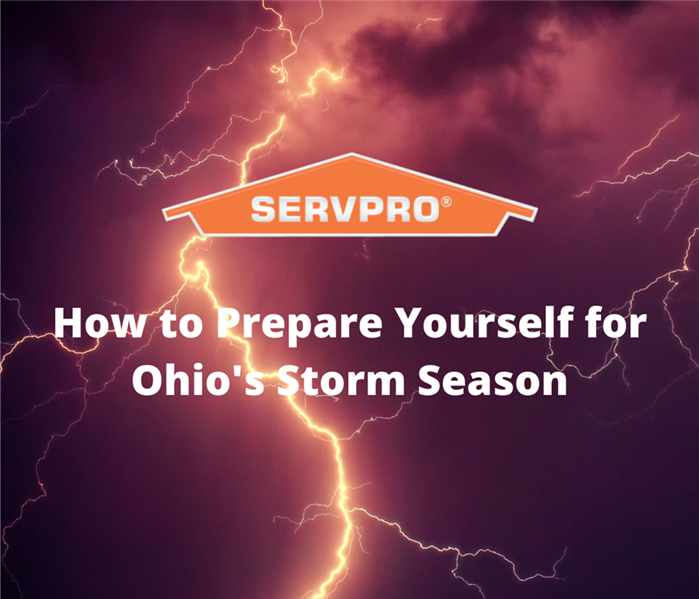 Storm season affects all of Ohio, make sure your NE Ohio home/business stays protected.
Storm season affects all of Ohio, make sure your NE Ohio home/business stays protected.
Storm season is upon us in Northeast Ohio. In fact, March 21-27, 2021, is Spring Severe Weather Awareness Week.
It’s a reminder that tornado season is near, running from April to June. Now is the time to prepare.
How can you prepare for this year’s Ohio storm season?
We have you covered.
Secure light-weight items
When the weather warms up, we like to beautify our patios and decks with outdoor furniture. But strong winds can scatter your decor across your yard and even down the street. If winds are strong enough, your furniture can become dangerous projectiles.
Here’s an easy fix. Anchor furniture with bungee cords, ropes, ratchet straps, or chains. Cover your furniture with weather-resistant furniture covers. Use sandbags to weigh these items down.
Cover windows and glass doors
Storm shutters and storm doors prevent objects from cracking or shattering your glass doors and windows. If you don’t have storm shutters, you can find security window film at most hardware stores. The film prevents shattering.
And, of course, you can hang plywood sheets.
Inspect your roof
Roofs take a beating throughout the Ohio seasons. Rain, snow, ice, heat, humidity, high winds, and hail. We recommend getting your roof inspected regularly, especially before severe storm season begins in April.
Trim dead limbs
Severe storms often cause dead and weak branches to fall.
Make it part of your normal lawn maintenance to check your trees and large shrubs for low-hanging and dead limbs, especially those near your home and vehicles.
Protect your most precious asset
At SERVPRO we’re confident our services can restore your property. But we can’t restore you.
Do the necessary research, and create a severe weather and tornado plan for your family. Here are three steps to get you started:
- Stay informed
- Designate a safe shelter
- Prepare for long-term sheltering
You can find more information about tornado safety at Weather.gov and Ready.gov.
Be safe and be well!
Protecting Your Pets During Stormy Weather
2/26/2021 (Permalink)
STORMY weather can be unsettling enough for humans, but it can be terrifying for our four-legged friends.
Cats and dogs have much more acute hearing than humans and are highly sensitive to changes around them which causes them to seek shelter and security by hiding.
Loud thunderclaps, lightning flashes and atmospheric pressure changes all combine to cause great stress to our pets which can show itself in nervous behavior.
The best way to help your furry family member get through a heavy storm is preparation – some training can be done to reduce fear and anxiety. The best way to start this is always reward calm behavior, with petting and praise. This way your dog will be more receptive to your reinforcement of good behavior during a storm. Just like in us, training cannot eliminate fear but it can help us handle stressful situations in a better manner.
And during the storm, there are many ways to give your pet the security it needs until the weather passes.
Just like humans, our animals will look for a safe space by instinct, so create a warm, inviting, and comfortable one for them. If they have one already that they choose to relax or sleep in, make this their safe space. If you need to head to the basement for storm protection, take their favorite blankets, or bed or crate with you downstairs. Putting on background noise like a fan can also help as it can help obscure the storm sounds with a familiar one.
Have a treat or a new toy on hand to distract them during the storm and reward your pet for good behavior. If storms are a regular occurrence in your area, you can help train your pet to see a storm as linked to getting a treat.
If you have plenty of warning of the storm’s approach, take the opportunity to give them extra walks and exercise beforehand. This can help distract them from early warning signs in nature of the impending storm, give them quality time with you to calm them, and help tire them to reduce over-the-top behavior during the storm.
Weighted blankets have been shown anecdotally to help reduce stress and anxiety in pets – and humans – but this is one area to know your own pet. If they have a favorite shirt or blanket, make sure they have it to hand, or paw.
And stay calm yourself – your pet will be looking to you for protection and will feed off your emotions. Reassure your dog or cat with appropriate stroking and petting, showing you are calm. Do not punish your pet for bad behavior if it is frightened during a storm – it is a natural reaction, and a negative response may compound the problem in future storms as they link storms to punishment.
Determining the Severity of an Incoming Storm
2/5/2021 (Permalink)
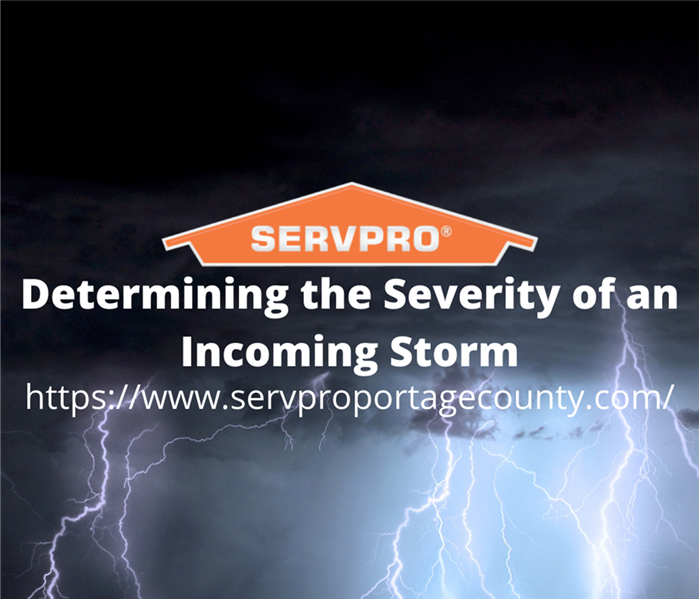 Know the signs of a serious storm so you can be prepared.
Know the signs of a serious storm so you can be prepared.
Almost everyone has been told sometime about the “counting rule” when it comes to thunderstorms. You’re told to count one-Mississippi, two-Mississippi, etc, from the moment you see lightning until the moment you hear thunder to determine how close the lightning is to you. Does this actually work? What do the seconds actually mean? This is the most common method of judging a storm and it does actually work. Lightning travels a speed 5 times faster than thunder, so you will always see the lightning first. The number of seconds between the two tells you the distance away the lightning actually is. When you see the lightning you start counting and stop when you hear thunder, whatever the number of seconds is between them tells you how far away the storm is. Divide the number of seconds by 5 and that will tell you how many miles away you are from the lightning. Five seconds between is one mile, fifteen seconds is three miles, and zero seconds means lightning is extremely close and you should be in a safe space. Using this method to determine the distance is common knowledge, but how can you determine the severity of the storm and if there is potential danger coming your way?
- Watch the Clouds Closely - Not all dark clouds are the same and can be used to help determine what is headed your way. If there is a storm coming that has dangerous even deadly potential the clouds will be extremely dark sometimes with a green tint as well. They will be big, low, and close to the ground cumulonimbus clouds and you will notice them rapidly develop vertically. Be sure to watch for any rotation in the clouds as well.
- Pay Attention to the Temperature - Severe storms and tornadoes form when low level, warm and moist air collides with dry cold air above. If you are outside and feel the temperature drop from warm or hot down to brisk in a short span of time you will know there is a severe storm quickly approaching.
- Beware of Sudden Wind and Precipitation Changes - The calm before the storm is not just an expression. If there are an abrupt calm following hail and heavy rain, this doesn’t mean the storm is over it can mean there is potentially dangerous weather coming very soon. A fast and intense wind shift is also a tell.
- Watch vs. Warning - There is often confusion on which of these means what. A watch simply means that tornadoes are possible in and near the watch area. A warning, on the other hand, means that a tornado has been spotted or indicated on the radar. Be sure to seek shelter when a warning is issued in your area.
Being aware of these warning signs can help you determine if the storm approaching is one that allows you to dance in the rain and jump in puddles or one that means you need to take precautions or head on down to the basement. These signs are not full proof as the weather is still vastly unpredictable and can change on a dime. Be sure to take necessary precautions when advised, better safe than sorry is a good rule of thumb when storms are on the way.
Preparing for Winter in Portage County
9/15/2020 (Permalink)
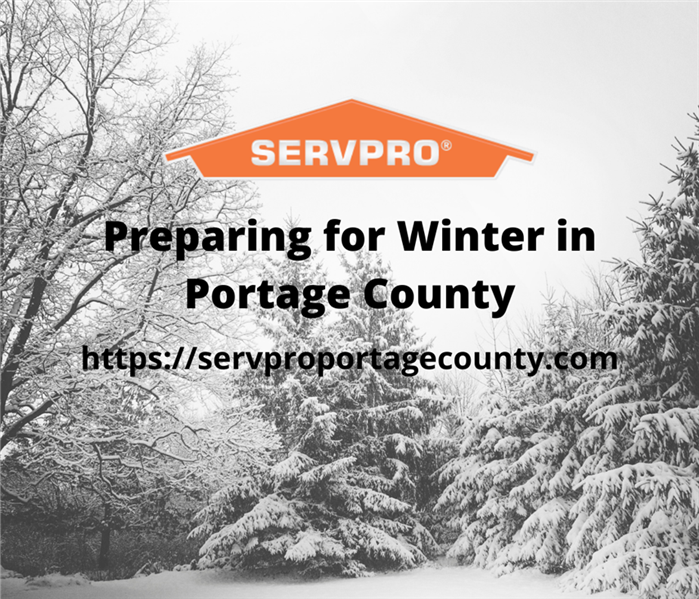 Don't let winter sneak up on you. Get your preparations done this fall.
Don't let winter sneak up on you. Get your preparations done this fall.
September has already brought along with it just enough cool weather to remind us of another winter coming. None of us wants to be freezing in knee-deep snow trying to imagine what we forgot to do to keep the heat in and the cold out. And that’s only one element of preparing for winter around the home that we need to remember. A few slightly inconvenient chores now, however, are a far sight better than having to deal with major issues in the midst of the next Northeast Ohio winter.
Probably the most overlooked and yet critical steps in preparing our homes for winter are to run a test on the heating system. Turn the thermostat to the heat position and make sure there is free-flowing air. Check and replace any necessary filters, and that the fuel supply is unobstructed and not leaking. Carbon monoxide readers should be tested for optimal function and all vents should be clear of obstruction.
Another place we sometimes forget that can cause serious energy loss, and that can even pose a real danger, is the chimney and fireplace. Have a professional out to make sure no mortar joints are damaged in the firebrick. Loose or damaged brick and mortar in this area may allow a fire to start in the walls of your home, a disaster we must try to prevent!
Keep in mind also that a great deal of our energy loss, which can represent a major hit to our wallets, are leaky or drafty windows and doors. From winterizing water pipes and reviewing insulation, to inspecting the roof and shutting down the sprinkler system, there’s a great deal to consider. At SERVPRO of Portage County, they specialize in making sure your home is safe and properly prepared for all seasons. They are always available for emergency repairs and clean-up, but specialists are on hand also to come out and review and assist in any preparations that help avoid disaster! Stay warm and dry this winter.
Do You Need Flood Insurance?
9/15/2020 (Permalink)
 If you're in a high-risk flood area, you might be in danger of big losses if you don't have flood insurance.
If you're in a high-risk flood area, you might be in danger of big losses if you don't have flood insurance.
Did you know that homeowners and renters insurance policies typically do not cover flood damage? Many of us may now be wondering if it is a good idea to be insured for flooding as well. Well, according to Ohio.gov, 98% of US counties have been impacted by flooding events. Once water damage has set in, it can easily set off a domino effect of expensive and hazardous problems. There are many things that can be done to reduce the risk of having your home damaged by flooding. For example, make sure your sump pump is working correctly, store critical documents in a safe, dry location, and always have a plan in place for the swift evacuation of family members and pets. You can also check the FEMA (federal emergency management agency) to see if your address is in a flood zone, which will show your home’s risk level for flooding, and any nearby waterways that may present a threat.
In 2010, federal officials expanded flood plain maps, making it necessary for many more Ohio residents to have flood insurance than ever before. This has caused concern about additional bills, but the cost of repairing damage from flooding is extensive, and liability flood insurance for low-risk homes can be as low as $135 a year. While any additional cost is a burden on working-class families, it is always a good idea to defend ourselves against the larger cost of sudden disasters.
Flooding is the most expensive natural hazard in the nation. Because Ohio rests in the middle of the row on the occurrence of natural disasters, however, there is a low likelihood of experiencing heavy damage to your home. This is also the reason why insurance costs for disasters caused by nature are relatively low in our area; in fact $350 lower than the national average. In the end, a little research and some knowhow may offer insight into the best options for making sure our homes stay safe and secure.
Is Your Sump Pump Ready for a Storm?
8/28/2020 (Permalink)
 Look out for common problem with your sump pump before they cause big problems for you.
Look out for common problem with your sump pump before they cause big problems for you.
Your basement – you might not feel like it’s the most important part of your home but if you’ve ever experienced a basement flood then you know just how devastating it can be. We often think of our homes as invincible; they do such a good job of protecting us from the elements most of the time. But if the little contraption in your basement that drains water away from your foundation isn’t working, you could be in store for a major disaster.
Did you know, for instance, that a sump pump is only good for about 10 years? That’s right, everything has a shelf-life and your sump pump is no exception. After a good solid decade of work, that little machine will be due for a change. Unfortunately, most people don’t realize or think about replacing their sump pump until it fails to do its job and you have to deal with some measure of flooding in you home. But if you’ve been in your home for a while and you’re not sure how much life your sump pump has left, you should call a plumber to come out and inspect it. They can let you know if it needs to be replaced or repaired before it’s too late.
Additionally, if your sump pump doesn’t have a lid, there is a chance that dirt and debris have gotten in and clogged it. You should inspect your sump pump on a regular basis to make sure that it isn’t clogged and that it drains the water effectively. Also, you should think about investing in a lid for that sump pump to prevent further troubles.
If your sump pump is running a lot or making excessive noise when it runs, that’s another good indicator that something is wrong. Grinding and thumping noises are definitely unusual for a sump pump so if you start to hear these noises it's probably time to call a professional.
And finally, it is of the utmost importance that your sump pump actually has power. If the circuit that the sump pump is on blows, you might not immediately notice unless it is also connected to something you frequently use. Even more common than that, however, is the instance where your sump pump was harmlessly unplugged but never plugged back in. You would be surprised at how many times this exact situation has spelled disaster for a home. Simply double-checking that the cord is safely plugged into the outlet could make all the difference in the world.
Sump pump testing is fairly easy so there is no excuse not to check yours out and ensure that you are protected. If something isn’t working properly, you will know to call a plumber and get yours in ship-shape before it’s too late. And if you don’t catch your working sump pump in time, SERVPRO of Portage County will be there to pick up the pieces. We are faster to any disaster.
Prepare For Spring Storms in Portage County
4/4/2020 (Permalink)
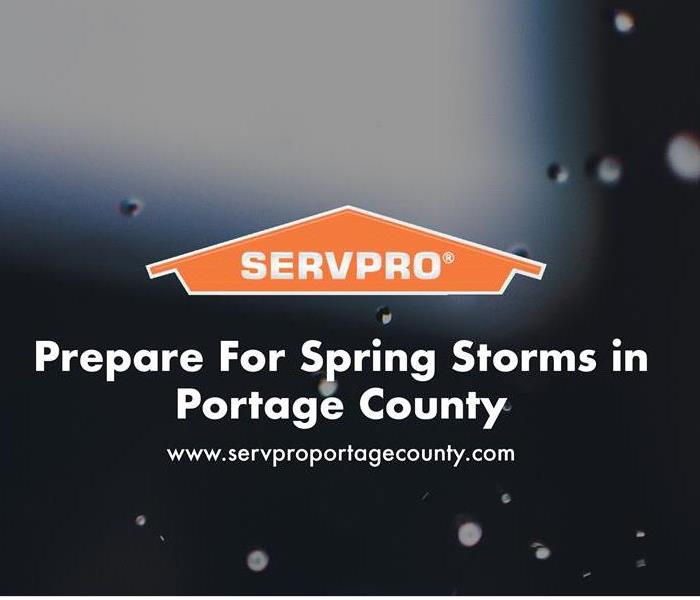 We hope that you stay safe in the spring months of Portage County.
We hope that you stay safe in the spring months of Portage County.
Spring season is here in Portage County. Green grass, colorful flowers, and relaxing rain showers. Consider the tips below to take safe steps when dangerous weather is predicted.
- Download the free Red Cross tornado app. This app puts everything you need to know to stay safe in a tornado at your fingertips.
- Pick a safe room in your home where you can gather if a tornado is headed your way: a basement, storm cellar or interior room on the lowest floor with no windows.
- Prepare for strong winds by removing diseased and damaged limbs from trees.
- Move or secure lawn furniture or anything else that can be picked up by the wind.
- Know the tornado danger signs: dark, often greenish clouds, a wall cloud, cloud of debris, large hail, and a funnel cloud and take shelter immediately.
- Watch for storm signs like darkening skies, flashes of lightning or increasing winds and take shelter immediately.
- Postpone any outdoor activities if there are thunderstorms of any kind.
- Anyone should be prepared to evacuate at a moment’s notice and head for higher ground when a flood or flash flood warning is issued.
- If you come upon a flowing stream where water is above your ankles, stop, turn around and go another way.
We hope that you stay safe in the spring months of Portage County. Should you have any damage from storms this spring we are here to help! Call SERVPRO of Portage County (330) 677-4483.
How To Prepare For a Storm in Portage County.
3/6/2020 (Permalink)
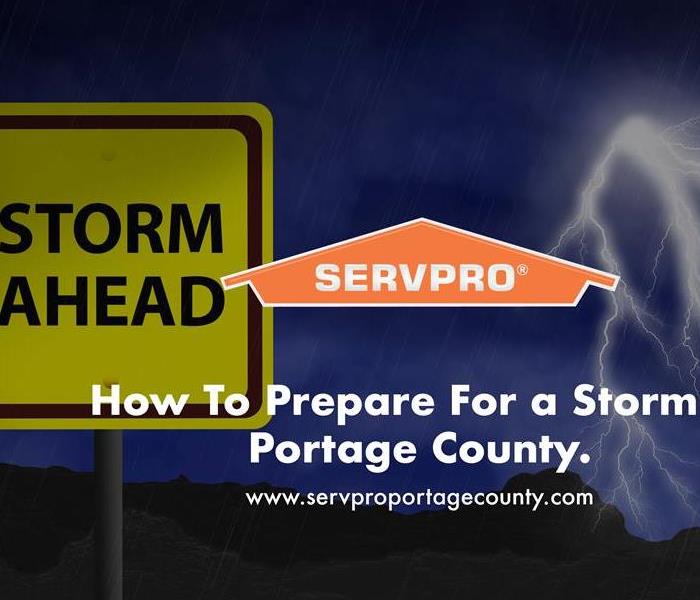 We know how devastating storm disasters can be, but we are here to help!
We know how devastating storm disasters can be, but we are here to help!
Storms can happen at anytime in Portage County. Sometimes they are unpredictable and other times you can prepare for them slightly. Either way mother nature can cause a ton of damage. It is important to know some basic storm tips:
BEFORE THE STORM
- Build an emergency supply kit
- Unplug any electronic equipment before the storm arrives.
- Secure outdoor objects that could blow away or cause damage.
- If you are outdoors, get inside a building.
- Shutter windows and secure outside doors, or close window blinds, shades or curtains.
DURING THE STORM
- Use your battery-operated NOAA Weather Radio for updates from local officials.
- Cordless and cellular phones are safe to use.
- Unplug appliances and other electrical items: computers, power surges, etc. Lightning can cause serious damage to these items.
- Avoid contact with electrical equipment or cords.
- Stay away from windows and doors.
AFTER THE STORM
- Never drive through a flooded roadway.
- Stay away from storm-damaged areas to keep from putting yourself at risk.
- Stay away from downed power lines and report them immediately.
We know that having storm damage can be stressful, but we make sure to handle all of your restoration needs in a timely and professional manner. These are just some tips that you can do in the meantime until SERVPRO of Portage County helps.
We know how devastating storm disasters can be, but we are here to help! Call SERVPRO of Portage County (330) 677-4483 to help get your home restored efficiently.
Prevent Winter Storm Damage in Your House.
2/5/2020 (Permalink)
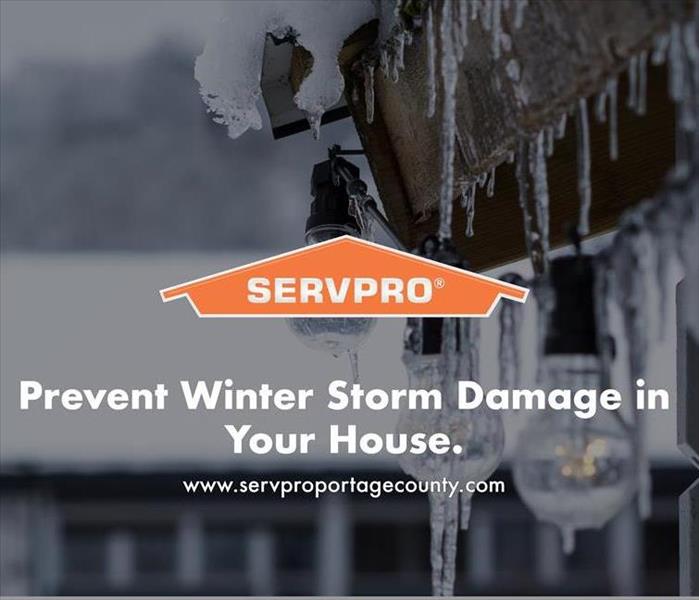 We know how devastating a storm and water disaster can be, but we are here to help!
We know how devastating a storm and water disaster can be, but we are here to help!
After a winter snow storm, temperatures can go up and down which causes melting and freezing. This temperature variation can cause snow or ice to melt and trickle into your house. This can cause damage on the way inside the cracks. Water damage is not fun for any home owner.
The goo news, you can prevent water damage from snow melts by shoveling snow away from your house. Yes, it could be as simple as that.
It may also be necessary to shovel snow from areas with grass underneath. This can help the water from entering and flooding once it warms up.
Contact our team of professionals for more information about snow water damage to your home.
We know how devastating a storm and water disaster can be, but we are here to help! Call SERVPRO of Portage County (330) 677-4483 to help get your home restored efficiently.
How to Prepare For Winter Storms in Portage County.
9/28/2019 (Permalink)
 In Portage County winter storms can cause water damage.
In Portage County winter storms can cause water damage.
In Portage County winter storms can cause water damage. Just a thin coating of ice can result in a travel nightmare, and heavier amounts will severely damage trees and power lines. Ice can increase the weight of branches by 30 times. A 1/2-inch accumulation on power lines can add 500 pounds of extra weight.
Ice accumulations are caused by freezing rain. Freezing rain is a result of snow falling through an above-freezing warm layer in the atmosphere above the surface of the earth, which melts the snowflakes into rain. The rain drops then move into a thin layer of below-freezing air right near the surface of the earth, allowing them to freeze on contact to the ground, trees, cars and other objects.
SERVPRO of Portage County put together tips on how to prepare for an ice storm:
- Avoid driving on icy roads for your safety and others.
- Be sure to charge cell phones and laptops ahead of time, and have portable outlet chargers if needed.
- Plan for pets to come inside, and store adequate food and water for them.
- Children should never play around ice-covered trees.
- Think about safe alternate power sources you could use if you lose heat, such as a fireplace, wood/coal stove or portable space heaters.
- Never use portable generators, camp stoves and grills inside your home or garage.
- Use flashlights during power outages instead of candles to prevent the risk of fire.
Before the Power Goes Out: Food Safety
- Check to ensure that the freezer temperature is at or below 0 degrees and the refrigerator is at or below 40 degrees.
- In case of a power outage, the appliance thermometers will indicate the temperatures in the refrigerator and freezer to help you determine if the food is safe.
- Freeze containers of water for ice to help keep food cold in the freezer, refrigerator, or coolers in case the power goes out.
- Have coolers on hand to keep refrigerated food cold.
When the Power Goes Out: Food Safety
- Keep the refrigerator and freezer doors closed as much as possible.
- The refrigerator will keep food cold for about 4 hours if it is unopened.
- A full freezer will keep the temperature for approximately 48 hours if it is unopened.
- Buy dry or block ice to keep the refrigerator as cold as possible if the power is going to be out for a prolonged period of time.
We know how devastating a storm can be, but we are here to help for all of your water damage and restoration needs! Call SERVPRO of Portage County, (330) 677-4483, to help get your home restored efficiently.
Winter Prep For Residential Houses in Portage County
9/26/2019 (Permalink)
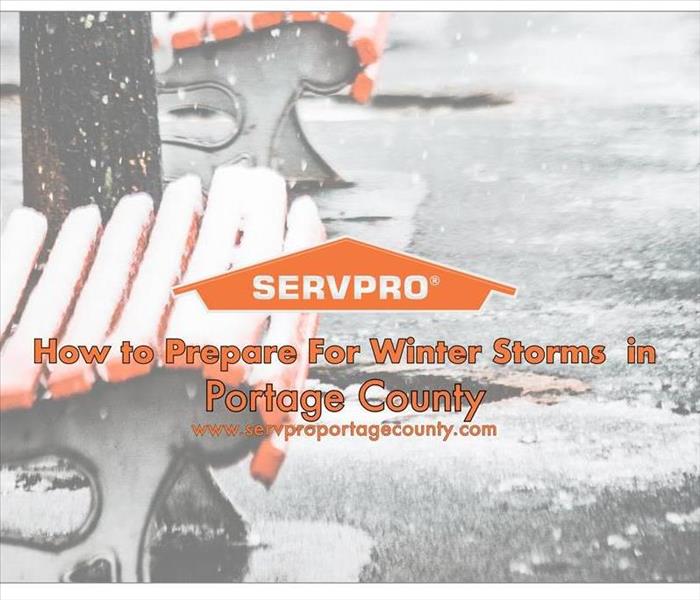 SERVPRO of Portage County has some tips to help you protect your home before winter storm damage
SERVPRO of Portage County has some tips to help you protect your home before winter storm damage
The winter months are upon us soon now. Freezing temperatures, ice, snow and wind can cause severe damage to your home and property. SERVPRO of Portage County has some tips to help you protect your home before winter storm damage:
Build Up of Ice and Snow on Your Roof
Ice dams occur when heat from a house escapes the attic and warms the roof. Snow on the roof melts and then refreezes, causing a ridge of ice to form and trap water on the roof. Protect your roof by thoroughly cleaning your gutters in the late fall, now is the perfect time before winter. Clogged gutters may allow ice to form and back up under the roofline.
Plumbing Inside and Outside Your Home
Plumbing located within exterior walls or unheated crawl spaces is the place for freezing or bursting. All interior pipes should be insulated or have wall insulation around them, such as attics and crawl spaces.
Fireplaces, Furnaces and Heating Systems
Improper use or poor maintenance of heating systems can cause fire and smoke damage. Wood burning fireplaces or stoves are among the worst culprits for fires. Clean chimneys and flues on fireplaces and stoves annually to help prevent fires.
If you run into having water damage from any storm, give SERVPRO of Portage County, (330) 677-4483, a call to help restore your home in an efficient manner.
Can You Dry Hardwood Floors After A Water Damage in Portage County?
8/24/2019 (Permalink)
The amount of homes with hardwood floors is steadily increasing for many reasons, the most prominent being that hardwood floors not only tend to sell homes faster, but they also increase the price. The only downfall is that in the event of a flood or water overflow, hardwood floors cannot be easily taken out and dried like carpet can. This brings us to our question – "Can you dry hardwood floors in place, or does everything need to be ripped out and replaced?" SERVPRO of Portage County will help you answer that!
First, you need to recognize the many different factors that play into properly achieving a dry hardwood floor. Water damage can increase drastically if not taken care of properly, professionally, and in a timely manner. Here are some of the main considerations:
Response Time - Water damage can be greatly decreased depending on the response time to the problem. Time is of the essence when it comes to hardwood floor water damage – the moisture, temperature, and dust layer beneath a wet wood floor can provide an ideal environment for mold and many other problems.
Type of Wood Flooring - Before you can determine how to properly dry hardwood floor, you need to determine what type of wood flooring you have.
Amount Of Moisture - A flooded hardwood floor can have up to 40% moisture content and can retain well above the normal amount of moisture for weeks if left to dry on their own. Nails may begin to lift, glue may release causing separation between floor pieces, and tongue and groove floors often cup or buckle when moisture has been absorbed.
If you decide to attempt to dry and save hardwood floors in place SERVPRO of Portage County has specialized drying equipment that forces airflow beneath the surface of the floor, allowing moisture to be released.
A restoration specialist can inspect the hardwood floor damage to determine the right plan of action for your home. They will work with you and your insurance carrier to decide the best option, so give as a call (330) 677-4483.
Tips to Help Prevent Summer Claims in Portage County
8/15/2019 (Permalink)
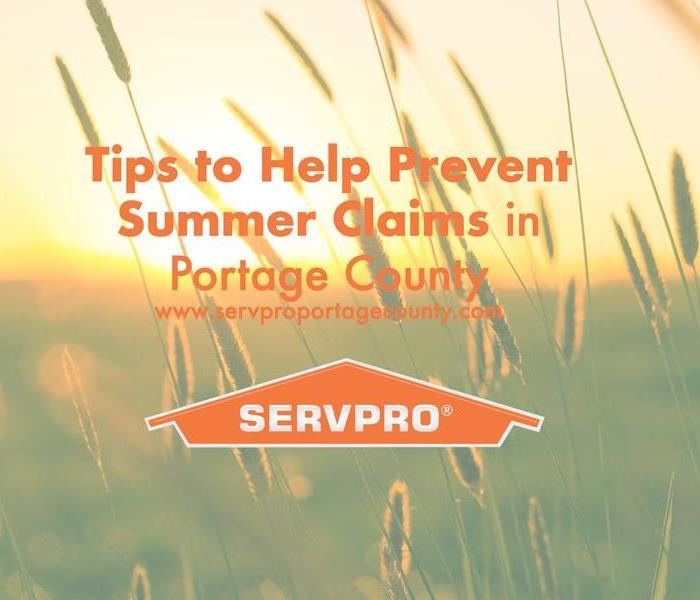 Accidents and emergencies do happen. If you find yourself in that situation, count on SERVPRO’s extremely well-trained professionals of Portage County
Accidents and emergencies do happen. If you find yourself in that situation, count on SERVPRO’s extremely well-trained professionals of Portage County
In a recent show of data, Farmers Insurance states that more than 50% of flood claims get filed during the summer between June and August. With travel being increased during summertime for families due to vacations and breaks, the weather sometimes causes unplanned and unexpected troubles.
Add a little preparation, forethought, and precaution in your household to allow you to take on some of the disasters summer can bring.
Follow these tips to help prevent summer claims:
- Caution Around Water on Roadways: Although you may FEEL safe driving through water, bear in mind merely six inches of water can reach the bottom of most cars. Flood waters can be dangerous due to depth, flow, and also the unseen debris and possible downed power lines. Losing control of putting yourself in harm’s way out of convenience could be detrimental.
- If in Doubt, Please Re-Route: Be wary of your surroundings and common driving routes. If you travel through underpasses, drainage canals, or similar spots, flash flooding can occur and you should plan alternative routes in case of an emergency.
- Store Valuables Safely: Anything of value such as documents, photos, electronics, or the like need placed on shelves or high enough off the ground should water penetrate your home. Water wreaks havoc enough as is without taking valuable possessions down with any soaking. More irreplaceable items may be better kept in a safety deposit box, safe, or other location.
Accidents and emergencies do happen. If you find yourself in that situation, count on SERVPRO’s extremely well-trained professionals of Portage County.
Water Damage Requires a Quick Response
4/16/2019 (Permalink)
Floods, rainstorms and tornadoes can become massive water damage threats to businesses during the often-stormy spring and summer months. Facilities plagued with such water woes this season must take quick action.
Floods, rainstorms and tornadoes can become massive water damage threats to businesses during the often-stormy spring and summer months. Facilities plagued with such water woes this season must take quick action to control many possible problems, experts say.
You won’t see it emphasized on the nightly news when a disaster hits, but water damage can represent potentially huge disasters for businesses and building owners and operators.
Water damage can mean much more to a business than just wet and soggy carpets. There are other common, more significant problems businesses face when water wreaks havoc on property, such as indoor air quality problems. Mold and mildew grow rapidly in damp, humid environments, leaving behind an unpleasant smell that permeates floors, walls and ceilings, even after the water has been removed. It also can create health problems for employees.
Damage to the building’s structure and foundation also can be an issue. When water sits inside a building for a period of time, the walls, ceilings and floors absorb the water, which threatens the overall structural integrity of the building and creates an unsafe environment. Total reconstruction of the building often becomes the only option.
Another major threat to business is the loss of expensive equipment, which often can cost hundreds of thousands of dollars to replace.
To minimize water damage, there are two critical steps that need to be taken:
- Act fast to assess the situation; and
- Control the environment within the building.
Act Fast and Call an Expert
The absolute first step to take is fast action. Damage resulting from water and flooding is very progressive. The longer the water flows or wet conditions are allowed to exist, the greater the recovery problem becomes. A water damage consultant must come in immediately to survey the situation.
In a typical scenario, a team of water damage recovery professionals is dispatched to the site to perform a thorough inspection and fully determine the extent of the damage. A disaster reclamation partner also will develop an intense restoration plan and determine which items are worth restoring and which are better replaced.
You can’t always save everything by drying, but you can save a tremendous amount. It’s not unusual to save between 30 and 70 percent of the cost needed to reconstruct a facility.
Controlling the Interior Environment
Another key in limiting water damage is to quickly control three conditions of a building’s atmosphere: relative humidity, temperature and air circulation. Fast, effective action at this point will generally confine the damage to the area that was directly affected by the water damage event.
The most effective way to control these conditions in a high-moisture environment, especially a large facility, is to employ professional disaster drying that combines air movers with desiccant dehumidifiers.
Disaster drying often eliminates the need to rip out and replace walls, carpet, floor covering, hardwood floors and the building structure, which can be a huge expense. On top of that, you preclude the odors and staining caused by mold and mildew. These problems can come back to haunt you weeks later in a superficially dried building.
The Desiccant Way
When a facility has been severely water damaged, you need high volume desiccant dehumidifiers. Some larger desiccant dehumidifiers can pull 800 gallons of water out of a building in one day, compared to the typical small refrigeration units that remove about five gallons a day.
Many people are surprised that “solid” materials such as concrete and hard woods absorb moisture. But they do and rather quickly.
Getting the water back involves a phenomenon called migration. Migration is the tendency for water molecules to move toward a low vapor pressure. When a room is filled with very dry air, which has low vapor pressure, trapped water migrates outward and is evaporated from the surface by the dry air. As the air in the room fills with water vapor, we expel it. We then replace it with more dry air and the process continues.
It’s also essential to be sure the equipment being used is sized right. Inappropriately sized drying equipment can lead to insufficient drying and long-term problems with the building. Only large-volume dehumidifiers could provide the massive drying power needed to dry the space quickly and thoroughly.
Best Defense: A Disaster Recovery Plan
To minimize damage and costs, companies need to think ahead about what to do in a water damage event and contact a water damage expert to create a Disaster Recovery Plan (DRP).
A DRP can limit the extent of water damage occurrences by defining and prioritizing the recovery of areas within a facility and stating immediate next steps. Proper planning and fast action are most certainly the best defense to preventing a catastrophic water damage event.
After the Disaster: Providing Restoration Solutions, Not Suggestions
4/1/2019 (Permalink)
Hurricanes. Tornadoes. Flooding. Frozen pipes. Storms.
All of these will occur during the course of a year. All will cause major damage to dwellings and buildings. What is one of the major sources of damage- WATER. Water damage is caused by a variety of things including plumbing leaks, burst pipes and broken hoses, moisture ingress within a structure, clogged toilets, foundation cracks and leaking roofs. While the symptoms will be addressed by plumbers, roofers, foundation specialists and other tradesmen and tradeswomen, clean-up and remediation specialists have some of the toughest and potentially dangerous jobs to tackle to ensure a safe and functional dwelling or building. Before a building is considered safe, someone must disinfect affected areas, remove damaged or mold/mildew- contaminated items, properly dispose of the water-damaged items and then review and inspect areas to ensure that they’re safe.
So, what can we recommend to residents and occupants of the buildings that have significant (or even small levels of) water damage?
- Stop the flow of water.
- Turn off the power.
- Assess the conditions. Is it safe to stay in the building?
- Look for electrical hazards and “slip and fall” areas. Stay away from compromised areas.
- Get away if possible, but if you must stay, then only do activities that are absolutely necessary.
- Try not to lift wet materials. Water will add significant weight to any material that absorbs.
What can you recommend an owner do after flooding?
- Gather items from floors and low lying areas.
- Remove any excess water by mopping or blotting up the water with towels or absorbent material.
- Remove wet rugs and carpeting that can easily be removed.
- Remove any wet upholstery, cushions, pillows, blankets and dry them out
- Wipe excess water from furniture, cabinets, accessories
- Turn AC ON for maximum drying during the summer
What should you recommend an owner NOT do after flooding?
- Don’t use household appliances, televisions or any other electronic devices
- Don’t leave wet fabrics in place. Hang luxury items such as leather goods, furs and dresses.
- Do not use a vacuum cleaner (unless it’s a wet-dry vac) to remove moist or water from a room.
- Don’t leave colored items on a wet floor.
- Don’t turn on ceiling fans or lights if the ceiling is wet.
- Stay out of rooms where the ceiling is sagging.
After a homeowner or building occupant has taken the requisite steps to ensure his/her safety, then its time for the professional to come in and do their work. Professionals will use the following steps to assess and restore property following water damage:
- Initial contact and pre-inspection survey
- Inspection and water damage assessment
- Water removal and extraction
- Drying and dehumidification
- Cleaning and sanitizing
- Restoration
A fast response is crucial to prevent long term damage, sick-building syndrome and irreversible damage. While professionals are responsible and knowledgeable, sometimes little things that might be missed become critical to the successful remediation/restoration after water damage or flooding.
- Mold and Mildew are the ENEMIES. Protect yourself and building inhabitants by using the proper protective gear including body suits, gloves and masks or respirators. Contain the mold/mildew before trying to disinfect. Wrap your booties, pants and gloves with tape to ensure a good and proper seal of your body suit.
- Use environmentally-friendly antimicrobial and antibacterial treatments when you can. These will leave less of an impact to the inhabitants once the job is complete.
- Properly dispose of refuse. Bag the molded, damaged and soiled items in a thick plastic bag and twist the opening to form a goose-neck then seal the opening tightly with duct tape to ensure that the contents are secure and will not escape during transport to the landfill, preventing further contamination.
- Seal off the contaminated environment from the area that is not contaminated or is being used by the building inhabitants. Hang poly-sheeting, build airflow containment units and properly seal them off with strong polyethylene or cloth duct tape suitable for use in damp, moist environments. Innovative containment systems with pre-inserted zippers and doors are now available for ease of use.
Customers are now used to fast, reliable and almost instantaneous service. The e-commerce model used to obtain goods is now being applied to service as well. By offering easy “one-stop” access to water damage cleanup; easy contact, assessment, water removal, drying, cleaning, sanitizing and restoration; you will enhance your relationship with your customers and attract them to your business. Remember these tips when communicating potential water leakage and flooding issues with your customers and you will become their one-stop source providing solutions, not suggestions.
Storms and Little Warning
2/5/2019 (Permalink)
Storms occur with little warning and can be especially devastating, so you’ll need the company that you can trust to rise to the occasion. Regardless of the type of storm, SERVPRO of Portage County can handle any size disaster.
When severe weather breaks, storm water builds up on streets, near lakes, rivers, and local storm control channels. Should storm water begin to accumulate around your house, here are a few easy steps that may help protect your home:
- Make sure all windows are closed tightly – especially check windows in your basement area
- Move valuables to higher ground
- Continuously monitor the sump pump (if you have one) to verify that it is operating properly
- Make sure to secure any outside furniture or decorations that can become airborne with high winds
- Cover basement window wells to help divert water from pooling inside the well
- Make sure to pick items off the floor that may get damaged from water exposure
- Keep your shoes, car keys, and family emergency kit near the door
Safety should always be your main focus when faced with storm water.
- Do not walk through moving water, as even 6’ of water is enough force to knock you off your feet
- Stay away for flood waters as it is contaminated and unhealthy and may pose health hazards
- People or vehicles in flooded areas can hamper Emergency Responders ability for quick response
Storm and flood water damage can be very destructive. Immediate action is needed, and you need the company with storm damage experience. SERVPRO of Portage County has the expertise and the resources to handle any size disaster. If you need assistance with storm or flooding call 1-800-648-1212.
After the Disaster: Providing Restoration Solutions, Not Suggestions
10/25/2018 (Permalink)
Hurricanes. Tornadoes. Flooding. Frozen pipes. Storms.
All of these will occur during the course of a year. All will cause major damage to dwellings and buildings. What is one of the major sources of damage- WATER. Water damage is caused by a variety of things including plumbing leaks, burst pipes and broken hoses, moisture ingress within a structure, clogged toilets, foundation cracks and leaking roofs. While the symptoms will be addressed by plumbers, roofers, foundation specialists and other tradesmen and tradeswomen, clean-up and remediation specialists have some of the toughest and potentially dangerous jobs to tackle to ensure a safe and functional dwelling or building. Before a building is considered safe, someone must disinfect affected areas, remove damaged or mold/mildew- contaminated items, properly dispose of the water-damaged items and then review and inspect areas to ensure that they’re safe.
So, what can we recommend to residents and occupants of the buildings that have significant (or even small levels of) water damage?
- Stop the flow of water.
- Turn off the power.
- Assess the conditions. Is it safe to stay in the building?
- Look for electrical hazards and “slip and fall” areas. Stay away from compromised areas.
- Get away if possible, but if you must stay, then only do activities that are absolutely necessary.
- Try not to lift wet materials. Water will add significant weight to any material that absorbs.
What can you recommend an owner do after flooding?
- Gather items from floors and low lying areas.
- Remove any excess water by mopping or blotting up the water with towels or absorbent material.
- Remove wet rugs and carpeting that can easily be removed.
- Remove any wet upholstery, cushions, pillows, blankets and dry them out
- Wipe excess water from furniture, cabinets, accessories
- Turn AC ON for maximum drying during the summer
What should you recommend an owner NOT do after flooding?
- Don’t use household appliances, televisions or any other electronic devices
- Don’t leave wet fabrics in place. Hang luxury items such as leather goods, furs and dresses.
- Do not use a vacuum cleaner (unless it’s a wet-dry vac) to remove moist or water from a room.
- Don’t leave colored items on a wet floor.
- Don’t turn on ceiling fans or lights if the ceiling is wet.
- Stay out of rooms where the ceiling is sagging.
After a homeowner or building occupant has taken the requisite steps to ensure his/her safety, then its time for the professional to come in and do their work. Professionals will use the following steps to assess and restore property following water damage:
- Initial contact and pre-inspection survey
- Inspection and water damage assessment
- Water removal and extraction
- Drying and dehumidification
- Cleaning and sanitizing
- Restoration
A fast response is crucial to prevent long term damage, sick-building syndrome and irreversible damage. While professionals are responsible and knowledgeable, sometimes little things that might be missed become critical to the successful remediation/restoration after water damage or flooding.
- Mold and Mildew are the ENEMIES. Protect yourself and building inhabitants by using the proper protective gear including body suits, gloves and masks or respirators. Contain the mold/mildew before trying to disinfect. Wrap your booties, pants and gloves with tape to ensure a good and proper seal of your body suit.
- Use environmentally-friendly antimicrobial and antibacterial treatments when you can. These will leave less of an impact to the inhabitants once the job is complete.
- Properly dispose of refuse. Bag the molded, damaged and soiled items in a thick plastic bag and twist the opening to form a goose-neck then seal the opening tightly with duct tape to ensure that the contents are secure and will not escape during transport to the landfill, preventing further contamination.
- Seal off the contaminated environment from the area that is not contaminated or is being used by the building inhabitants. Hang poly-sheeting, build airflow containment units and properly seal them off with strong polyethylene or cloth duct tape suitable for use in damp, moist environments. Innovative containment systems with pre-inserted zippers and doors are now available for ease of use.
Customers are now used to fast, reliable and almost instantaneous service. The e-commerce model used to obtain goods is now being applied to service as well. By offering easy “one-stop” access to water damage cleanup; easy contact, assessment, water removal, drying, cleaning, sanitizing and restoration; you will enhance your relationship with your customers and attract them to your business. Remember these tips when communicating potential water leakage and flooding issues with your customers and you will become their one-stop source providing solutions, not suggestions.
Lightning coverage and safety
9/4/2018 (Permalink)
Lightning can cause damage to your home and belongings—and can cause bodily harm. It's prudent to take steps to prevent the dangerous effects of lightning and to keep yourself and your family safe. Here are some things you can do.
Lightning and insurance
Your standard homeowners and business insurance policies, and the comprehensive portion of an auto insurance policy cover damages—such as a fire—that results from a lightning strike. Some policies also provide coverage for the damage caused by power surges.
That said, it's far better to prevent lightning damage than to have to deal with the consequences.
Protect your home by installing a lightning protection system
A lightning protection system (LPS) provides a specified path on which lightning can travel. The Lightning Protection Institute (LPI) explains how LPSs work in this infographic. A rooftop network of lightning rods or air terminals is connected to a series of down conductors, which carry the current down to a grounding network. In that way, the system safely directs the destructive power of the lightning strike into the ground, which leaves the structure of your home or business and its contents undamaged.
Lightning protection is not a “do-it-yourself” project—contract a UL-listed lightning protection specialist to install the system in accordance with national safety standards.
Protect your home and electronics from surges
Electrical surges from lightning can enter a structure via power transmission lines and cause electrical fires as well as damage to your building's electrical system, your appliances and your home electronics.
Regular power strips offer little surge protection. To assure the best safeguards, UL-listed surge protection devices (SPDs) should be installed to filter and dissipate damaging electrical discharges. Most electric utilities will rent or sell a surge device for the electric meter to “clamp down” on incoming surges; licensed electricians can install similar protection.
To protect valuable electronics like computers, home entertainment centers, gaming systems and smart home technology, install UL-listed transient voltage surge suppressors–and consider unplugging expensive electronics when you know a storm is approaching.
Protect yourself and your family with precautions
- When thunder roars, go indoors. During a storm, it's best to take shelter in a house or other fully enclosed building. Inside, don’t stand near open windows, doorways or metal piping. Stay off the phone and avoid contact with small appliances, like toasters and hairdryers. As water conducts electricity, also stay away from plumbing, sinks, tubs and radiators.
- If you know a storm is coming, avoid known hazards and dangerous locations. These include areas where you will be the highest object—a golf course, for example. Bodies of water also attract lightning, so avoid lakes, beaches or open water, and fishing from a boat or dock. Never ride golf carts, farm equipment, motorcycles or bicycles during a thunderstorm.
- If you are caught outside in a thunderstorm, take shelter in a hard topped-vehicle or a low area such a tunnel or even a cave if necessary. Stay clear of fences, isolated trees and other conductive objects such as telephone poles, power lines and pipelines. These present a danger from a potential side flash, which is voltage from a nearby, lightning-struck object.
- If you're caught in an open field with no nearby shelter, and your hair begins to stand on end, drop down into a crouch with your hands on your knees, and balance on the balls of your feet. The static electricity in your hair is an indication that lightning is about to strike, and the idea is to make as little contact with the ground as possible. Never lie down flat or place your hands on the ground.
5 things you should do if your property is damaged in storm
9/4/2018 (Permalink)
SACRAMENTO, Calif. (KCRA) —
After a storm moved through the Sacramento area, emergency crews responded to hundreds of calls regarding toppled trees that damaged property.
Experts break down what you should do if your property sustains storm damage:
Advertisement1) File a claim immediately
Insurance agents said they are busy processing claims after Wednesday's storm. They said the faster you file, the sooner you can get an agent to your property to assess the damage.
Claims that aren't complicated usually don't take long to process, Sacramento-based State Farm Michael Yee insurance agent said.
2) Contact storm damage repair companies
Some storm damage repair companies in the Sacramento area said their phones have been ringing off the hook. They recommend getting problems fixed as soon as possible, especially with more wet weather and potential problems ahead.
3) Make sure your contractor is licensed with the state
When it's time to make repairs, the California Office of Emergency Services warns people to make sure your contractor is licensed with the California Contractors State License Board.
The board also warned against paying in cash, being cautious about door-to-door offers of repair services and recommend always having a written contract.
4) Be prepared to pay out of pocket
Yee said whether the damage was done by a tree owned by you, your neighbor or the city, some expenses will likely come out of your pocket through a deductible.
5) Don't wait for more storms to contact your insurance company
Yee said damage to your home or car can't always be bundled together. Some problems will have different deductibles, so make sure to file as soon as the damage happens -- even if you have to file multiple times.
Know What Steps to Take as Spring Storms Occur
4/16/2018 (Permalink)
 Beautiful Spring... It can also bring major storm activity and being prepared to protect yourself, your home and contents is important.
Beautiful Spring... It can also bring major storm activity and being prepared to protect yourself, your home and contents is important.
Spring-
Green grass, colorful flowers, relaxing rain showers and distant, whispering rumbles of thunder. But it isn't always this peaceful. Consider the notes below, Northeast Ohio, and take to safe steps when dangerous weather is predicted for Summit County, Portage County and/or Canton.
Tornadoes- Spring can be the peak season for tornado activity. Tornadoes occur mostly on warm spring days between 3:00 and 9:00 p.m. However, tornadoes can occur anywhere, at any time of the year, at any time of the day.
The Red Cross has safety steps people should take now to be ready if a tornado warning is issued for someone’s neighborhood:
- Download the free Red Cross tornado app for mobile devices. The tornado app puts everything you need to know to stay safe in a tornado at your fingertips. The app can be downloaded from the iTunes or Google Play stores by searching for American Red Cross.
- Know your community’s warning system.
- Pick a safe room in your home where family members can gather if a tornado is headed your way. This should be a basement, storm cellar or interior room on the lowest floor with no windows.
- Prepare for strong winds by removing diseased and damaged limbs from trees.
- Move or secure lawn furniture, trash cans, hanging plants or anything else that can be picked up by the wind and become a projectile.
- Know the tornado danger signs – dark, often greenish clouds, a wall cloud, cloud of debris, large hail, a funnel cloud or a roaring noise.
Thunderstorms- Thunderstorms are most likely to happen in the spring and summer, during the afternoon and evening. However, like tornadoes, they can happen anywhere, at any hour of the day. Every thunderstorm produces lightning, which kills more people every year that tornadoes or hurricanes.
The Red Cross has steps you can take if a thunderstorm is predicted for your area:
- If thunder roars, go indoors. If you can hear thunder, you are close enough to be in danger from lightning.
- Watch for storm signs like darkening skies, flashes of lightning or increasing winds.
Postpone any outdoor activities. Many people who are struck by lightning are not where it is raining. - Take shelter in a substantial building or a vehicle with the windows closed. Shutter windows and close outside doors securely. Stay away from windows.
- Do not take a bath, shower or use plumbing.
If you are outside or driving, there are things you should do to remain safe. Information can be found with the following link discussing what to do before, during and after a thunderstorm.
Flooding-Spring can be a time of year for flooding. Communities in the Midwest and south have already seen floodwaters inundate neighborhoods. Snow melt and heavy spring rains fill rivers and streams and flooding can occur. Flash floods occur suddenly when water rises rapidly along a stream or low-lying area. People should be prepared to evacuate at a moment’s notice and head for higher ground when a flood or flash flood warning is issued.
Other safety steps include:
- Stay away from floodwaters. If you come upon a flowing stream where water is above your ankles, stop, turn around and go another way. Six inches of swiftly moving water can sweep you off of your feet.
- If you come upon a flooded road while driving, turn around and go another way. If you are caught on a flooded road and waters are rising rapidly around you, get out of the car quickly and move to higher ground. Most cars can be swept away by less than two feet of moving water.
- Keep children out of the water. They are curious and often lack judgment about running water or contaminated water.
- Be especially cautious at night when it is harder to recognize flood danger.
Heed this advice as the Spring weather begins ! Stay safe, Northeast Ohio !
Storm Damage ? Call SERVPRO of Portage County at our 24/7 Emergency Service line - 330-677-4483 or Request Help Online
FEMA Publishes Guidance for Handling Flood Losses
3/19/2018 (Permalink)
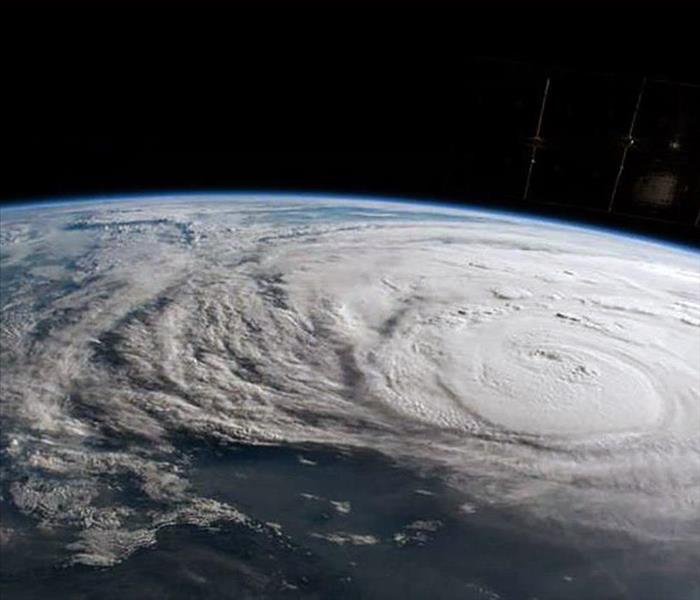 There's no easy solution.
There's no easy solution.
The 2017 Hurricane Season was a brutal one. Seventeen named storms struck the United States causing a record-setting $200 billion in damage.
Much of this damage occurred not from high winds or storm surges, but from extended heavy rains that triggered major flooding.
In an effort to facilitate prompt post-inspection advance payments to policyholders, the Federal Emergency Management Agency (FEMA) published an outline of steps, serving as guidance for handling flood losses.
- Report the loss to your insurance agent or the insurance carrier, who will in turn assign an adjusting firm who provides an adjuster to assist you with presenting the support for your loss.
- The adjuster inspects the property (scoping visit) and may ask if you wish to request an advance payment from your insurer; the adjuster will send you a detailed room-by-room unit-cost estimate of damage and a proof of loss form. If you agree, the proof of loss form should be signed to and sworn to, and upon your insurer's review and agreement, the loss is settled.
- If you do not agree, you should work with your adjuster to find a dollar amount for the covered loss that can be agreed on. Also, working with your general contractor is helpful.
- If you are unable to reach an agreement with the adjuster, you should contact your adjuster's supervisor by calling the adjusting firm.
- The supervisor should work with you to find a dollar amount for the covered loss that can be agreed on.
- If you are unable to reach an agreement with the adjuster's supervisor, you should contact your insurance carrier's claims department to discuss the amount difference or coverage issue with the claim examiner.
- If you are unable to reach an agreement with the claims examiner, you should complete a proof of loss form for the total amount you are requesting (the disputed amount plus any additional amount), and then send the signed and sworn-to proof of loss form with documentation to support the additional amount you are requesting, directly to the insurance carrier claim examiner.
- If the insurer agrees with your documentation, they will pay the amount you are requesting; or they may provide the adjusting firm with their recommendation which may lead to an additional payable amount and a new Proof of Loss. If the insurer disagrees, they will issue payment for any undisputed amount, and a written denial letter will be sent to you fully explaining the reasons for the disallowance (denial) of your claim or any portion of your claim.
- If you agree with the denial or no longer dispute the decision, the loss is settled.
- For any denial of payment, in whole or in part, which you are disputing, three options remain:
- You may send an amended Proof of Loss with supporting documentation back to the claim examiner; see STEP 8
- You may submit a formal Appeal to FEMA
- A written appeal letter must be sent to FEMA within 60 days of your insurer's denial letter, along with a copy of the denial letter and the documentation you have to support your appeal.
- You may file a lawsuit against your insurer
- A lawsuit must be filed within one year of your insurer's first written denial letter and only in U.S. District Court in the district where the property is located at the time of the loss
- However, once you file a lawsuit, you may no longer appeal your claim to FEMA or file an amended Proof of Loss with your insurer.
Storm or water damage ? Call SERVPRO of Portage County's 24/7 Emergency Service line - 330-677-4483 or Request Help Online
Preparing for Spring
2/5/2018 (Permalink)
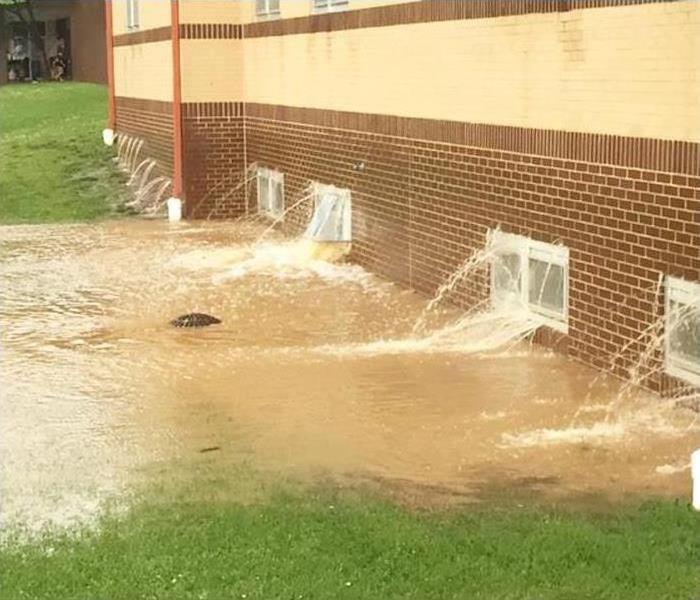 There are dangers posed by wet or flooded basements, so it's important to call a flood damage professional like SERVPRO of Portage County.
There are dangers posed by wet or flooded basements, so it's important to call a flood damage professional like SERVPRO of Portage County.
Well, folks, Punxsutawney Phil has seen his shadow, predicting 6 more weeks of winter. While we have trusted the Pennsylvania groundhog for countless years, additional weather-predicting rodents have called for an early Spring this year, 2018. That said, it is never too soon to begin preparing for the back and forth weather that Spring is.
The most severe of storms Spring can bring are thunderstorms. When warm, moist air collides with cool, dry air, thunderstorms can bring lightning, tornadoes and flooding, and if not properly prepared, this can cause extensive damage to your home or business.
Below are 5 ways to prepare your home for storm damage that can cost you hundreds, even thousands, of dollars, if not kept on mind:
- Clean your gutters. Clear any debris from your gutters to make sure all the rain water can easily flow off your roof away from your home. When water can't get through your gutters, it pools on your roof and around your house. For further information on this subject, refer to our blog post, "Rain Gutters and Water Problems."
- Trim your trees. Some of the worst storm damage is caused by falling trees. A healthy, sturdy tree is unlikely to topple in high winds, but one with dead limbs, or disproportionate growth might. Spring is the perfect time to contact an arborist to evaluate your trees, and if you’ve got large trees on your property, you should have them evaluated yearly. Maintaining them will help you protect both your property and the tree itself.
- Back up your sump pump. When heavy rains come, sump pumps can get overloaded. A flooded basement can cause all sorts of damage to your contents, and when water covers wiring or electric appliances, things get dangerous. Make sure your sump pump has a battery backup just in case the electricity goes out. You might also consider installing a second, battery operated pump that will come on if the main one fails.
- Gather emergency supplies. American Red Cross recommends keeping a three-day supply of food and water for your family, and a seven-day supply of any medications. You might also add a battery operated radio, and a car adapter for your cell phone.
- Grade your yard. If water pools around your home, your foundation is in jeopardy. Ensuring that your yard slopes away from your home will keep rain water from sitting by your foundation and causing damage. Click here for a YouTube tutorial, provided by "This Old House," on how to grade your home. Most lawn companies, however, offer this service.
As we get closer to the rainy season, consider these five steps to keep your home and family safe.
Do you have water problems ? Call SERVPRO of Portage County for help- 330-677-4483
Mobile Homes- Are They Covered?
10/5/2017 (Permalink)
 Wind-damaged mobile homes in Oklahoma.
Wind-damaged mobile homes in Oklahoma.
We might be in Ohio, away from all the severe hurricane damage to trailer parks in Florida, Georgia and Texas, but this does not change how the events have changed our perspective on these homes' insurance coverage.
That perspective being: this is important!
Enlightened by Property Casualty 360's article, Mobile homes — A unique insurance exposure, a mobile home serves as both a home and a vehicle. When on the road, authorities treat it as a vehicle, and once settled down in a trailer park, it becomes a home.
Because of the portable and lightweight nature of mobile homes, wind is a significant hazard! Hurricanes and tornadoes, especially, can cause significant damage to mobile homes with the high winds easily flipping, uplifting and damaging the home.
Strap-downs and straps are required to offer stability from these cases, and some newer models use frame anchors tied to the chassis. Some carriers may require a particular type of tie-down for a specific part of the country. Wind zone ratings will indicate how much wind a mobile home can withstand.
With all this in consideration, is the part-vehicle part-home eligible for homeowner's insurance? Coverage is offered for when the mobile home is on the move, covering collision, collision defined as it is in the auto policy.
"As long as the collision happens while the vehicle is being transported there is coverage," Property Casualty 360's article reads. "Not covered is a loss caused by the home making contact with the transportation vehicle that results in damage to the home unless the transport vehicle was in an accident. The coverage applies for 30 days from the effective date on the endorsement. Coverage also includes upset of the home while it is in transit or stranding or sinking if the home is on a licensed ferry line."
Mobile homes require their own coverage needs, meaning its policy will be different from a homeowner's policy. There are carriers that specialize in mobile homes and the coverages they need:
HomeInsuranceWeb.com
Do you have storm damage? Call SERVPRO of Portage County at 330-677-4483
Water Damage After a Major Storm
9/6/2017 (Permalink)
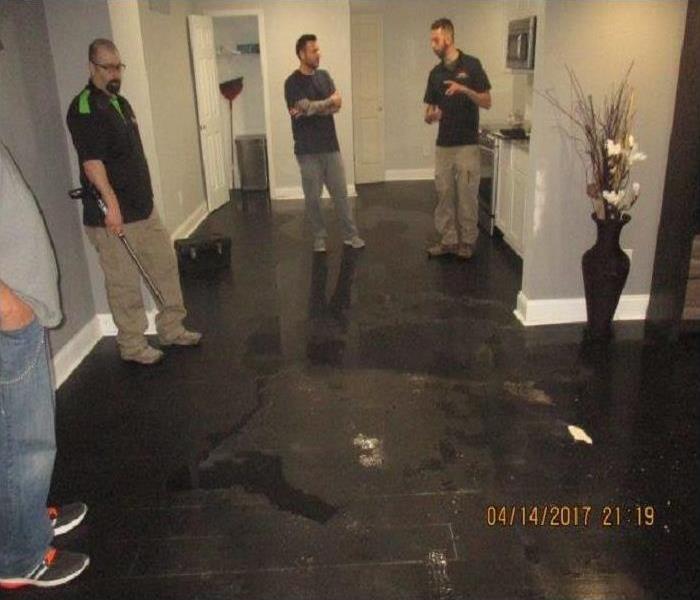 We have the storm damage restoration experience and specialized equipment to restore your home or business back to pre-storm condition.
We have the storm damage restoration experience and specialized equipment to restore your home or business back to pre-storm condition.
When a major storm passes close to the house, the home may suffer water damage that is difficult to repair.
There are many things a family can do to begin repairing any destruction, but a certified professional will likely be needed to get rid of any serious health or structural threats. Contaminated storm surges or floods can carry pathogens and become a breeding ground for mold. If allowed to fester, these mold spores can spread throughout the building and become even more difficult to remove. In many cases, governmental agencies could condemn the structure if the microbial threat is too great.
The main reason a home is sensitive to water damage is because moisture is difficult to detect once the floods recede. Standing liquids can encourage microbial growth within 24 hours and can saturate all kinds of textiles and seep through drywall. Moisture may collect behind the walls, where mold and bacteria may multiply out of sight.
Professional restoration services can quickly identify what items in the home are compromised by water damage. Normally, anything that is porous may need to be discarded if it has come in contact with contaminated fluids. These items, like mattresses, box springs, pillows and particle board, trap more moisture than other materials and foster the growth of microbes.
A family can prepare for professional cleaning by getting rid of these items before the technicians arrive, but be sure to properly record and itemize the items for insurance purposes prior to disposing. Once professionals arrive at the building, they will be able to track down any pockets of excess moisture and remove them.
It’s important for a family to hire professionals that are certified through a reputable organization. Technicians trained in this area know how to find compromised areas and do what it takes to restore them.
Flood damage in your home or business? Call SERVPRO of Portage County today at our 24/7 Emergency Service Line - (330) 677-4483 or at our Online Help Line.
Storm Damage: Validating Claims Through Weather Data
9/5/2017 (Permalink)
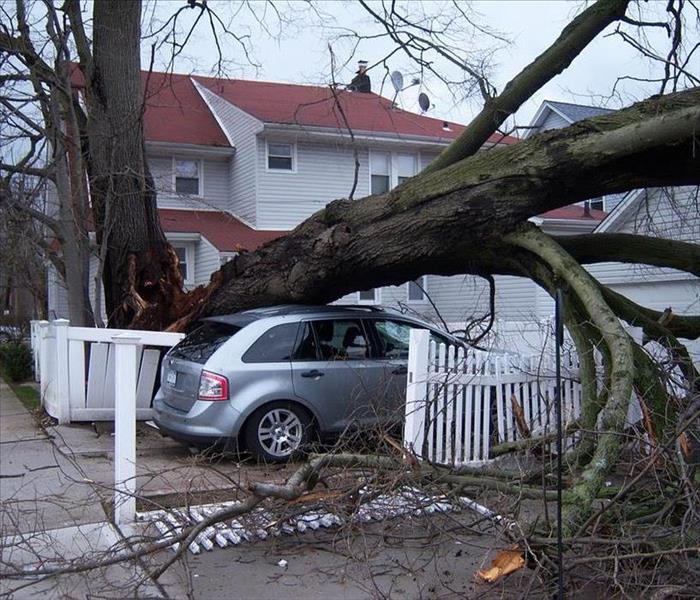 In the past year, the U.S. was hit with 8 major storm and climate-related events that each caused more than a billion dollars in property damage.
In the past year, the U.S. was hit with 8 major storm and climate-related events that each caused more than a billion dollars in property damage.
Data and analytics can go a long way in improving inefficiencies and processes, weather data, to be specific, holding a significant value.
Extreme weather events will always occur and certain areas of the country are more susceptible than others. For the insurance claims industry, this data is especially critical to verify claims following an extreme weather event.
3 ways to validate claims through weather data | PropertyCasualty360
According to Aite Group, "79% of insurers believe that data and analytics will have a significant impact on meeting the needs of [property and casualty] (P&C) customers."
Insurers have several options in capturing data to enhance insurance claims. Drone assessment is among the list for property damage assessments. Pairing weather data with drone services and their accurate imagery of a site could add validity to a claims decision.
Lightning and hail data and additional advanced weather data technologies are imperative for insurance companies in improving internal efficiencies as well as customer operations.
Do you have storm damage? Call us at our 24/7 Emergency Service number, 330-677-4483.
HVAC Compressor Damage: Lightning or Wear & Tear?
8/15/2017 (Permalink)
In the summer months, when severe weather is most prevalent, property carriers see an increase in claims for lightning damage to HVAC equipment, and most often to the compressor.
HVAC compressor damage due to lightning is commonly misdiagnosed. More often than not, an HVAC claim that is originally reported as damaged by lightning is ultimately found to have suffered damage due to some other cause of loss.
No matter the time of year, one of the most common culprits of compressor failure is mechanical damage due to age-related wear and tear. Nearly 43% of all compressors (regardless of how the damage is initially reported) fail due to this cause of loss.
Considered the “heart” of the HVAC system, the compressor is not only critical to proper system function, but can often be impossible to repair and expensive to replace. Moreover, without understanding the root cause of compressor failure, the simple act of replacing this component may not ultimately resolve the overarching issue. When handling HVAC claims, it is critical to understand what caused the compressor to fail before agreeing on a scope of repair for settlement.
For additional information on mechanical damages versus electrical damages, click here to the source of this information.
Vehicles After Flooding: Filing a Claim
8/14/2017 (Permalink)
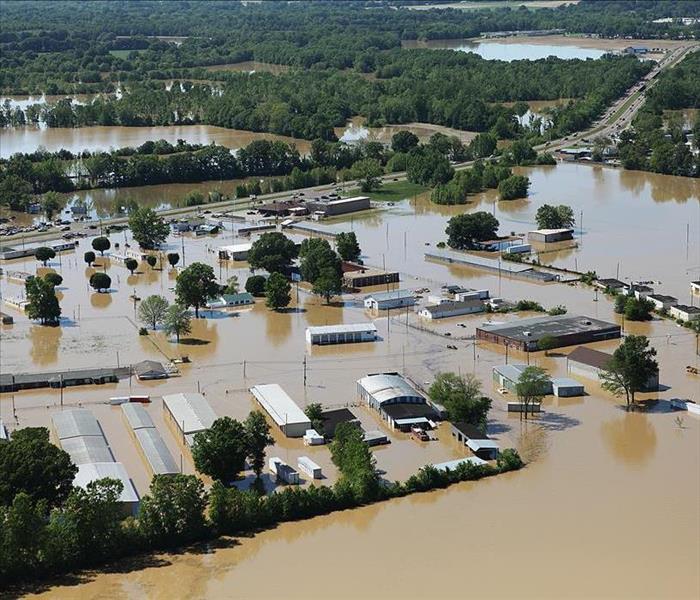 No region is safe from flooding. All 50 states are subject to flash floods.
No region is safe from flooding. All 50 states are subject to flash floods.
In the aftermath of a natural disaster, it is important for consumers to be aware of the warning signs of a flood damaged vehicle. If you are in the market to buy a used vehicle, be sure to inspect it carefully.
The following tips on filing a claim will help those with flooded vehicles after a storm:
- Contact your insurance agent as soon as possible. Have your policy readily available and find out whether the damage is covered under the terms of your policy and how long you have to file a claim.
- Your automobile insurance policies cover flooding if you have purchased comprehensive coverage. If you only have liability coverage, your vehicle is not covered for flooding.
- Minimize your losses and document the damage. Take photos of any damage and then make whatever reasonable temporary repairs that are needed.
- Remember that flooding is generally not covered under standard homeowners and renters insurance policies. Flood insurance is a separate policy through FEMA’s National Flood Insurance Program and some private insurers.
- Ask for identification from any agents, adjusters or contractors. Do not sign any contracts for repairs until you have been instructed to do so by your adjuster and you have called the Better Business Bureau in your area.
- Don’t be afraid to file a claim. Storms are considered “Acts of Nature” and an insurance company cannot cancel, refuse to renew or increase the amount of a premium on a homeowners policy based solely on this type of incident.
Do you have storm damage? Contact our SERVPRO franchise at (330) 677-4483 or request help online.
Windstorm Damage: Whose Insurance Covers the Loss?
7/28/2017 (Permalink)
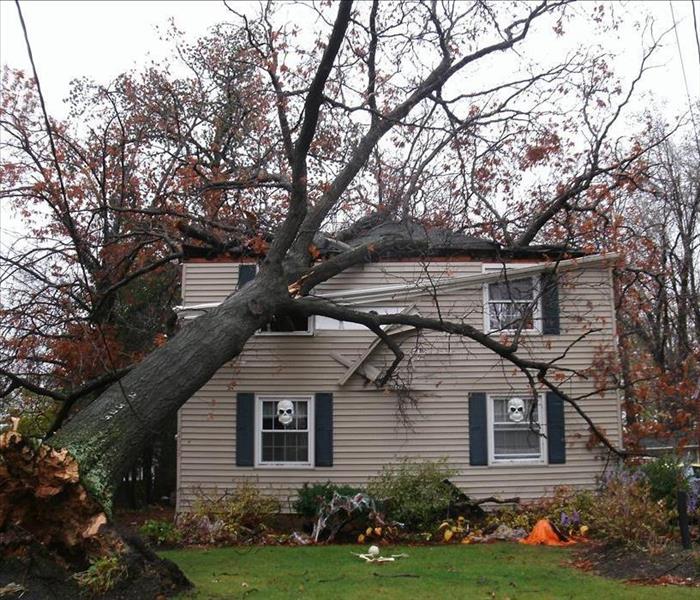 Straight-line winds are common with the gust front of a thunderstorm or originate with a down-burst from a thunderstorm.
Straight-line winds are common with the gust front of a thunderstorm or originate with a down-burst from a thunderstorm.
Yes, windstorm damage is covered on a standard homeowner's insurance policy. But whose homeowner's insurance policy covers the loss?
First, it is important to understand what windstorm insurance policies cover. Windstorm insurance is a special type of property and casualty insurance designed to cover damages caused by high winds. Windstorm insurance may cover damages from hurricane-force winds, tornadoes, hail and other weather events that are accompanied by wind gusts that exceed 35 miles per hour.
A hypothetical tree falls on your house.
- Scenario 1: your tree falls on your house. Your homeowner's policy will provide coverage up to your policy limits, after you pay the deductible. The coverage extends to cover damage to your main home, garage, shed or other additional buildings and structures such as a fence. If there is damage to the structure of the house, debris removal is also covered, up to policy limits.
- Scenario 2: your tree falls on your neighbor's house. The basic rule is that the insurance policy of the property that was damaged pays for the loss.
- Scenario 3: your neighbor's tree fell on your house. Your homeowner's insurance policy should pay for any damage per the property claim.
Please note that homeowners insurance usually won't cover a loss caused by negligence or a maintenance-related issue. So if the tree was rotting and ready to fall down before the storm, homeowners insurance likely would not cover the damage the tree caused to your home.
Flood Safety Awareness Week is March 13-19
3/17/2016 (Permalink)
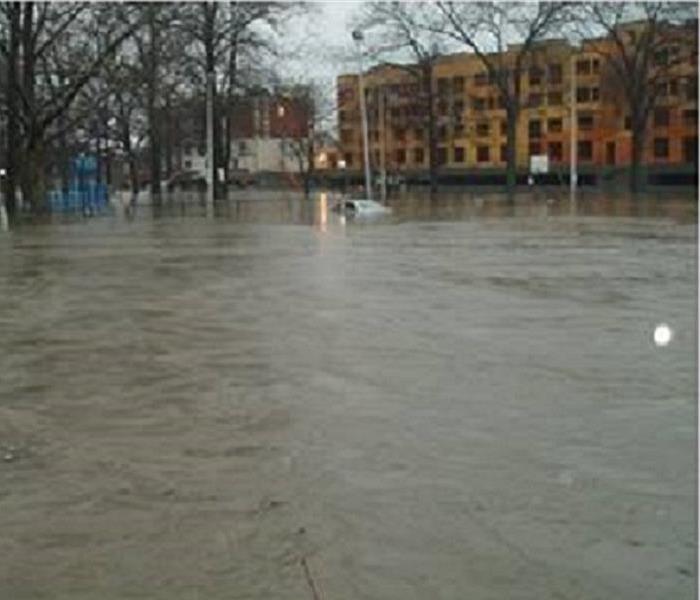 Floods can be unpredictable and cause a lot of damage. Stay informed and prepared as flood season approaches!
Floods can be unpredictable and cause a lot of damage. Stay informed and prepared as flood season approaches!
March 13-19 is Flood Safety Awareness Week. According to the National Weather Service, "Each year, more deaths occur due to flooding than from any other severe weather related hazard. The main reason is people underestimate the force and power of water. More than half of all flood related deaths result from vehicles being swept downstream. Of these, many are preventable." As flood season approaches, now is a great time to review such topics as the dangers of flooding, driving through water, and flood insurance. Additional resources are available at http://www.weather.gov/okx/FloodAwarenessWeek2016.
 Understanding the common types of storm damage and how to address them is crucial for protecting your property and ensuring a swift recovery.
Understanding the common types of storm damage and how to address them is crucial for protecting your property and ensuring a swift recovery.






 24/7 Emergency Service
24/7 Emergency Service
